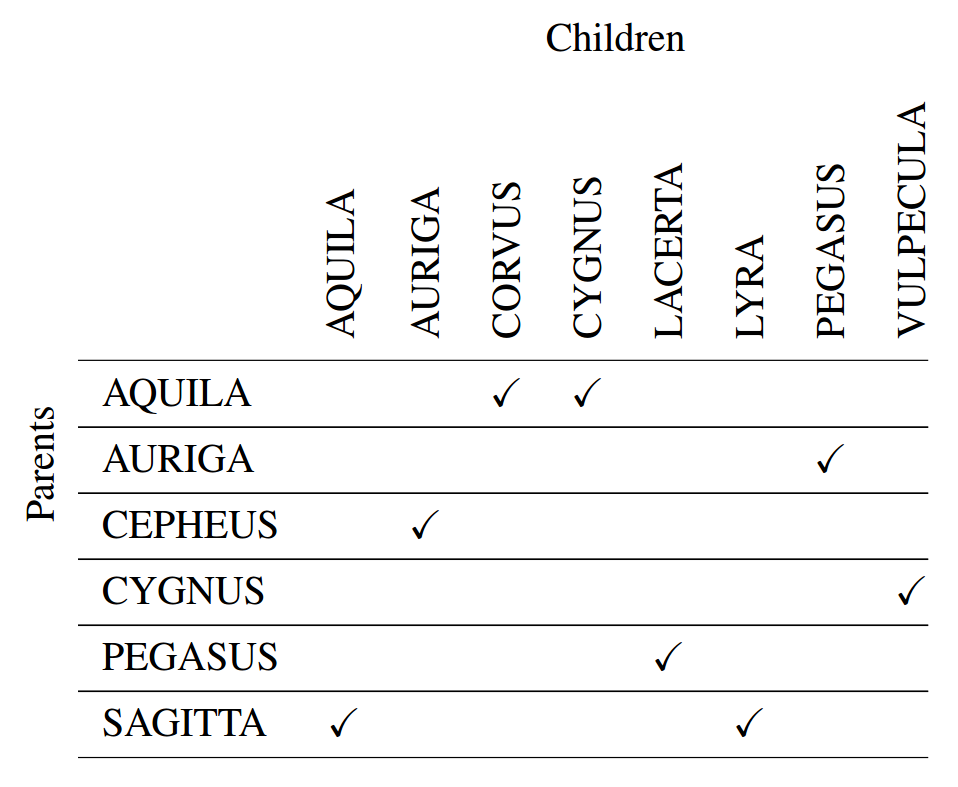Usage¶
Defining traceables¶
Traceables are defined using the traceable directive described below.
-
.. traceable::TAG¶ Create a traceable item. The
TAGshould be a unique string throughout the documentation, because it is used to reference the traceable.The traceable can be given attributes, such as a title, a version, and relationships with other traceables. Attributes are specified using the form
:<option-name>: <option-value>[1]. For example, the text below defines a traceable with tagLOREM-IPSUM, title “Lorem ipsum”, and content “Lorem ipsum dolor sit...”:.. traceable:: LOREM-IPSUM :title: Lorem ipsum Lorem ipsum dolor sit...
Traceable directives have the following properties:
- A single argument defining the traceable’s tag (
.. traceable:: <TAG>)- The tag must be unique throughout the documentation
- The tag may not contain spaces
- Zero or more options (
:<option-name>: <option-value>)- The special option
titledefines the traceable’s title - Options with a valid relationship name define relationships which this traceable has with other traceable
- Arbitrary option names and values are allowed; if not special options as listed above, the values are stored as traceable attributes and can be used for filtering/querying traceables
- The special option
- Optional content
- If content is given, it will be parsed as regular ReST.
- A single argument defining the traceable’s tag (
Referencing traceables¶
Traceables can be referenced using the traceable role described below.
-
:traceable:¶ Create a reference to a traceable defined elsewhere in the documentation. For example:
Lorem ipsum :traceable:`LOREM-IPSUM` dolor sit...
Showing traceables matrices¶
Relationships between traceables can be shown using the traceable-matrix
directive described below.
-
.. traceable-matrix:: Generate a traceables matrix. The matrix shows pairs of traceables which are related to each other by a given relationship (see the
:relationship:option below). Various formats are available for showing the pairs of traceables (see the:format:option below).The following options are available for this directive:
:relationship:– name of traceables relationship- Specify which relationship between traceables to show in the generated matrix.
:format:– name of formatSpecify the matrix format to generate. The following formats are available:
:format: tableTraditional traceability table format. This format allows the following additional options to be set::max-columns:– positive integerThe maximum number of columns to output. If more columns would have been necessary, multiple tables will be generated.
:max-rows:– positive integerThe maximum number of rows to output. If more rows would have been necessary, multiple tables will be generated.
:format: columns2-column table of related traceables:format: list2-level list of related traceables
For example, the directive shown below would generate a table showing
all traceables related to each other with the children relationship:
.. traceable-matrix::
:relationship: children
:format: table
The directive shown above creates a traceability matrix as shown below. The image below is a screenshot from the latex-PDF generated for the example project which is part of this extension’s source code.

Showing traceables graphs¶
| [1] | The formal specification of reStructuredText directives is documented here: http://docutils.sourceforge.net/docs/ref/rst/restructuredtext.html#directives |